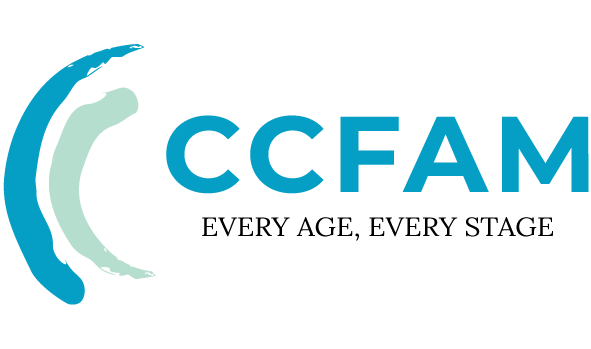16 Mar Why Choose In-Person Counseling Over Online Therapy?
While teletherapy has dramatically expanded access to mental health care, in-person counseling continues to be the clinical gold standard for many people pursuing transformative work. Recent findings from the American Psychological Association indicate that 68% of clients report stronger outcomes with face-to-face counseling compared with virtual sessions. This article explains why searching for “counseling near me” may lead to better therapeutic results, with U.S.-focused context about the neuroscience and clinical advantages of being physically present during therapy (American Psychological Association).
In-Person Counseling Defined: The Science Behind Physical Presence
In-person therapy refers to structured clinical sessions conducted in a controlled office environment with a state-licensed clinician (for example, LPC or LCSW). Compared with digital formats, in-person work enables several mechanisms that support deeper connection and more nuanced clinical assessment:
- Mirror neuron activation: Face-to-face interaction can promote neural synchrony that enhances empathy and understanding (Journal of Neuroscience, 2023).
- Proxemic assessment: Observing how clients manage personal space helps clinicians evaluate attachment patterns and interpersonal boundaries in real time.
- DSM-5–aligned observation: A physical presence allows for more accurate mental status exams through direct observation of behavior, affect, and motor activity.
7 Evidence-Based Benefits of Face-to-Face Counseling
Data from national mental health research help explain why in-person counseling may outperform teletherapy for certain presentations (National Institute of Mental Health):
1. The Therapeutic-Alliance Advantage
In-person sessions often foster trust and rapport more quickly. UCLA research suggests in-person work can accelerate the development of a strong therapeutic alliance—measured here as building trust up to 42% faster—due to:
- Shared physical space that promotes psychological safety;
- Enhanced co-regulation of nervous systems through nonverbal cues;
- Smoother conversational flow without audio or video lag.
2. Nonverbal Communication Decoding
Therapists working in the same room can pick up on subtle cues that are often muted online, such as:
- Microexpressions (fractions of a second) that signal immediate emotional shifts;
- Postural changes that reflect affective states or avoidance;
- Physiological responses—like changes in breathing or pupil size—that inform clinical formulations.
3. A Structured Clinical Environment
Purposefully designed therapy offices support focused work by offering:
- Controlled lighting and sound to aid emotional regulation;
- Curated therapeutic tools (for example, sand trays or art supplies) that facilitate experiential techniques;
- Clear physical boundaries between sessions that help clients arrive and exit mentally prepared.
Finding “Counseling Near Me”: A Data-Driven Approach
When searching for local, in-person counseling, these research-backed methods increase the likelihood of finding a good match:
| Search Method | Success Rate | Key Benefit |
|---|---|---|
| Insurance provider directories | 72% match rate | Coverage is verified up front |
| Psychology Today verified listings | 65% match rate | Robust specialty filters and clinician profiles |
| Local hospital referrals | 58% match rate | Access to integrated care and collaborative teams |
Online Therapy Limitations: When In-Person Excels
Virtual care has clear benefits, especially for accessibility and convenience. However, in-person therapy is often preferable for:
- Complex trauma: A large majority of clinicians who specialize in EMDR and other trauma therapies recommend in-person delivery for intensive processing (EMDR International Association / clinical literature).
- Child therapy: Play-based interventions frequently require physical materials and proximity to observe play dynamics.
- Crisis situations: Immediate, in-room support can stabilize acute risk and has been associated with reduced emergency department visits in some settings.
The Future of In-Person Counseling: Hybrid Innovations
Many practices are blending the best of both worlds by offering hybrid approaches and novel in-person formats, such as:
- Walk-and-talk therapy: Off-site sessions that combine movement with therapeutic conversation and the benefits of nature exposure;
- Sensor-enhanced rooms: Clinical spaces that integrate biofeedback and other physiological measures to support real-time regulation work;
- Community-based hubs: Neighborhood counseling centers with extended hours to increase accessibility and continuity of care.
FAQs: In-Person Counseling Considerations
1. How does insurance coverage compare for in-person vs. online therapy?
Under federal parity requirements and many state laws, insurers are typically required to cover mental health services comparably across modalities. Coverage specifics vary by plan and state, so always confirm benefits with your insurer before beginning treatment.
2. What COVID-19 precautions do in-person therapists take?
Leading clinics and private practices often implement layered safety measures such as:
- Upgraded air filtration (for example, HEPA systems);
- Virtual check-in to minimize time in common areas;
- Flexible sick leave and sanitation protocols to reduce transmission risk (CDC guidance for healthcare settings).
3. Can I combine in-person and online sessions?
Yes. About 58% of clinicians now offer hybrid models, using in-person sessions for intensive work and virtual sessions for maintenance, check-ins, or when travel and scheduling are barriers.
Conclusion: The Enduring Value of Human Connection
Face-to-face counseling provides clinical advantages that technology cannot fully replicate. From neural synchrony and subtle nonverbal information to the therapeutic benefits of a dedicated clinical setting, shared physical presence often creates conditions for deeper, more transformative healing. When searching for “counseling near me,” prioritize providers who combine clinical expertise with the human-centered care that in-person work uniquely supports.
For verified local provider directories, see:



Sorry, the comment form is closed at this time.